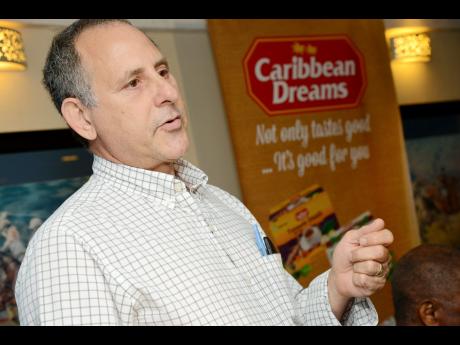“Do you have people reporting to you, either at work or at home?”
The answer to this question is yes, usually in some aspect of our life – we have relationships that people report to us or simply relationships where people share with us. Many times people will ask me “How do I get my team to be motivated?”
Trust and friendship is the basis of every positive relationship. The first step in building that trust is “accentuating the positive.” In an organization, in many instances there is a lot of attention given to negative behaviour, mistakes, things not going right – the more attention you pay to a behaviour, the more it will be repeated. Studies have shown with animals such as the killer whale that when you don’t pay a lot of attention to what they do wrong, but instead give lots of attention to what they do right – they do the right thing more often. We call this technique “Redirecting” and it simply means that people are energy and it’s all about energy management. It begins with controlling our own attention. A simple but very powerful rule to remember is, “If you don’t want to encourage poor behaviour, don’t spend a lot of time on it.” Instead re-channel the energy.
It is all about what you focus on.
As leaders – we must build positive relationships, increase people’s energy, and improve their performance on the job. In order to motivate people and create a world-class organization or department – you have to know how to manage people’s energy.
Our strategy is called the ABC Approach.
A represents Activator and this is something that stimulates the behaviour or the performance that you want. With animals the activator can be arm or hand signals, slapping the water or tooting a whistle, however, with people this can be a set of instructions, a training experience or even a boss yelling at them. The most common activators are goals. Goals are integral to the success of any activity or initiative.
 All good performance starts with clear goals. If leaders don’t sit down with their people and develop smart, workable goals that are clear on both sides, their people are left without any idea of what they’re expected to do or what good performance looks like. So the A in the ABC is whatever triggers the performance.
All good performance starts with clear goals. If leaders don’t sit down with their people and develop smart, workable goals that are clear on both sides, their people are left without any idea of what they’re expected to do or what good performance looks like. So the A in the ABC is whatever triggers the performance.
After you motivate the performance you want, the next step is to observe the Behaviour that follows. That’s what B stands for. In an organization this might be talking effectively with customers, achieving a sales quota, or getting a report in on time. With your children – it may be cleaning their room or doing homework. Observing the behaviour that occurs after the initial activation is a step often missed by leaders – even when they get the performance that they want.
Once goals are set and the necessary development has been completed – they disappear. When this happens, the leader is not able to take advantage of the third and most important step: the C or the Consequence – what happens after you get the behaviour that you were looking for.
Think about this for a moment – “When you do something right at work, what kind of response do you usually get?”
People need to know how they are doing because usually in the absence of feedback – we tend to make and draw our own conclusions. There are four kinds of consequences-
1. No Response
2. Negative Response
3. Redirection
4. Positive Response
Unfortunately people are so conditioned to being ignored; they think it is a normal behaviour of work. We want to focus on Redirection of the energy and the positive response “Catching Someone Doing Something Right” or “Whale Done” rather than the no response or negative response.
Redirection of the energy is simply:
1. Describing the error or problem as soon as possible, clearly without blame
2. Show its negative impact
3. If appropriate, take the blame for not making the task clear
4. Go over the task in detail and make it is clearly understood
5. Express your continuing trust and confidence in the person
When a good performance is followed by something positive, naturally people want to continue that behaviour. The intention of redirection is to set up a positive response. It is important to emphasize that you do not have to wait until it is “exactly right behaviour” before you respond positively.
Praise Progress – it’s a moving target.
In “Catching Someone Doing Something Right” or “Whale Done” – there are a couple steps that we should take to make this effective:
1. Praise people immediately (it is more sincere and genuine when it is done timely)
2. Be specific about what they did right or almost right
3. Share your positive feelings about what they did
4. Encourage them to keep up the good work
Here are some examples of “Catching Someone Doing Something Right” or “Whale Done” Responses:
To a Manager (At Work).
When you contributed your piece in the meeting, it was spectacular. Your opening was designed to draw attention, and I saw Ms. Stewart’s face light up when you made your points about energy and conservation. What you did in that short time has really helped to ensure the confidence of that client. It made us all look good!! Thank you so much and keep up the good work.
To a Work Team (At Work)
This team is going “Off the Charts” in terms of working together smoothly and assuming responsibility. In taking over the leadership, you all have helped remove to the role of a coordinator, rather than a boss. I love that. Let’s continue to work great as a team. I’m so proud to be your leader.
To a 1st Grader (At Home)
You’ve been getting up the first time I’ve called you in the morning before school. Do you know how much that helps me, when we’re all running around getting ready to go our separate ways? A whole lots!!! Thank you so much and I am so proud of you!!!
Be a role model for change in your organization, in your church, in your home or in your school because the power of positive relationships is remarkable. Imagine all the things in life that can be accomplished with each relationship working positively in a caring and memorable way – life would be more enjoyable and goals would be achieved easier with people whom you have developed trust and friendship.
Written by Yanique Grant, Certified Customer Service Consultant
Professional Training and Occupational Services, Inc
International Channel Partner for Service Quality Institute (SQI)
http//www.customer-servicejamaica.com
22G Old Hope Road, Oxford Place Suite 10
Kingston 5, Jamaica (West Indies)
Tel. (876)-908-2310, Cell: (876)-587-8432, Telefax: (876)-754-4474

 Businessuite Women2 weeks ago
Businessuite Women2 weeks ago
 Businessuite News244 weeks ago
Businessuite News244 weeks ago
 Businessuite News24 International4 weeks ago
Businessuite News24 International4 weeks ago
 Businessuite News243 weeks ago
Businessuite News243 weeks ago
 Corporate Feature4 weeks ago
Corporate Feature4 weeks ago
 Businessuite News245 days ago
Businessuite News245 days ago
 Business Insights2 weeks ago
Business Insights2 weeks ago
 Businessuite Markets3 weeks ago
Businessuite Markets3 weeks ago









